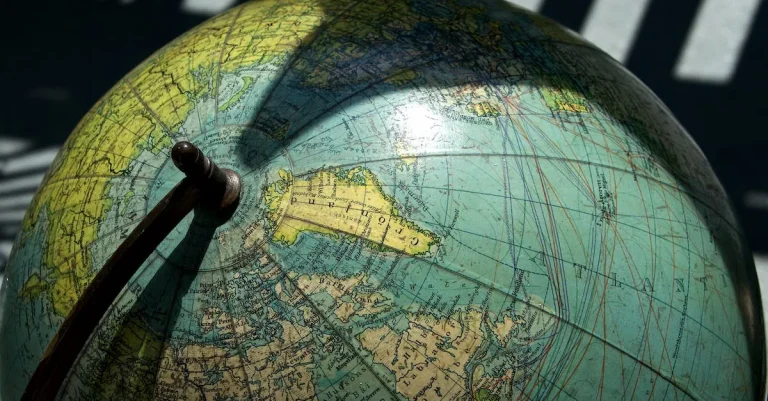Why Does Florida Have So Many Lakes?
With over 7,700 named lakes, Florida is known as the lake state. Its sprawling landscape is dotted with a diverse range of lake sizes and types, from massive reservoirs to tiny coastal lagoons. If you’re wondering how Florida ended up with more lakes than any other state in the lower 48, it all comes down to geography and geology.
Florida’s Low-Lying Geography
Florida is known for its abundance of lakes, and the state’s unique geography plays a significant role in their formation. Its low-lying terrain, combined with a network of wetlands and swamps, creates the perfect conditions for lakes to thrive.
Florida is Predominantly Flat and Low-Lying
One of the main reasons why Florida has so many lakes is its predominantly flat and low-lying geography. The state is located on a large peninsula, which means it is surrounded by water on three sides.
This, combined with its flat topography, allows for the accumulation of water in various areas, leading to the formation of lakes.
Wetlands and Swamps are Widespread
Florida is home to an extensive network of wetlands and swamps, covering approximately 30% of the state’s surface area. These wetlands act as natural water retention areas, collecting rainwater and runoff from surrounding areas.
As the water accumulates and reaches a certain level, it can form lakes, creating diverse ecosystems that are essential for wildlife and plant species.
In fact, the Everglades, located in southern Florida, is the largest subtropical wetland ecosystem in North America. It covers over 1.5 million acres and is home to a wide variety of flora and fauna, including numerous lakes and ponds.
The Terrain Favors Lake Formation
The combination of Florida’s low-lying geography and its abundant wetlands creates a terrain that is highly conducive to the formation of lakes. As rainwater and runoff collect in the low-lying areas, it creates depressions or basins. These depressions can fill up with water, forming lakes over time.
Additionally, Florida’s porous limestone bedrock allows water to seep through the ground, creating underground aquifers. These aquifers can feed water into the surface lakes, helping to maintain their water levels and overall health.
Unique Geology and Hydrology
Florida, also known as the Sunshine State, is home to a vast number of lakes that dot its landscape. The presence of these lakes can be attributed to the unique geology and hydrology of the state.
Florida’s Limestone Foundation
One of the main reasons why Florida has so many lakes is because of its limestone foundation. Limestone is a sedimentary rock composed primarily of calcium carbonate. Over millions of years, the accumulation of marine fossils and shells formed a thick layer of limestone beneath the surface of Florida.
This porous rock allows water to seep through, creating underground channels and cavities.
When rainwater or surface water flows through these underground channels, it can sometimes emerge at the surface, forming lakes. These lakes are often interconnected, forming a complex network of water bodies across the state.
Heavy Rains and Loose Soil
Another factor contributing to the abundance of lakes in Florida is the state’s heavy rainfall and loose soil. Florida experiences a subtropical climate, with frequent rain showers and thunderstorms. The combination of heavy rain and relatively flat terrain leads to water accumulation in low-lying areas, resulting in the formation of lakes.
The soil in Florida is predominantly sandy, which allows water to percolate easily. As a result, when it rains, the excess water quickly drains into the ground and collects in natural depressions, forming lakes.
High Water Table and Aquifers
Florida’s high water table and extensive aquifers are also significant factors in the formation of lakes. The water table refers to the level at which the ground is saturated with water. In Florida, the water table is relatively close to the surface due to the state’s flat topography and abundant rainfall.
This high water table, combined with the presence of aquifers, creates ideal conditions for the formation of lakes. Aquifers are underground layers of permeable rock or sediment that can store and transmit groundwater.
When the water table rises, it can saturate the aquifers and cause water to overflow, resulting in the formation of lakes.
The Great Age of Florida’s Lakes
Florida is renowned for its abundance of lakes, boasting over 7,800 of them throughout the state. The presence of these lakes can be attributed to various geological and climatic factors that have shaped the landscape of Florida over millions of years.
Glaciers Never Reached Florida
Unlike states in the northern parts of the United States, Florida never experienced the presence of glaciers during the last Ice Age. Glaciers are responsible for the formation of many lakes in regions where they once existed.
Since Florida remained untouched by glaciers, its lakes have different origins.
Many Lakes Formed During Wetter Climates
One key factor in the formation of lakes in Florida is the region’s fluctuating climate. Florida’s climate has varied over time, with periods of increased rainfall and wetter conditions. During these periods, excess water accumulates in low-lying areas, creating lakes.
As the climate changes, some lakes may dry up or merge with other bodies of water, while new ones may form.
This fluctuation in climate has been observed throughout Florida’s history. For example, during the Pleistocene Epoch, which lasted from about 2.6 million to 11,700 years ago, Florida experienced alternating periods of wet and dry climates.
These shifts in climate played a significant role in the formation and evolution of many of Florida’s lakes.
Changes in Sea Level Over Time
Another important factor in the formation of lakes in Florida is the state’s unique geography and its proximity to the ocean. Florida’s landscape is characterized by limestone, which is porous and prone to dissolution.
Over time, changes in sea level have influenced the water table and contributed to the formation of lakes.
During periods of higher sea levels, water infiltrates the limestone, creating underground water channels. As sea levels recede, these channels can collapse, resulting in the formation of sinkholes. Some of these sinkholes can fill with water, becoming lakes in the process.
Furthermore, Florida’s many coastal lakes are influenced by the rise and fall of tides. These lakes, known as coastal dune lakes, are formed when sand dunes create a barrier between the ocean and inland water sources.
The tides push water through small openings in the dunes, forming unique and diverse ecosystems.
Understanding the geological and climatic factors that have contributed to the formation of Florida’s lakes helps us appreciate the rich natural heritage of the state. From glacial absences to changing sea levels, these factors have combined to create a diverse and fascinating network of lakes throughout Florida.
The Role of Humans
Florida is known for its abundance of lakes, and while natural processes play a part in their formation, human activity has also played a significant role. Over the years, humans have contributed to the creation and alteration of Florida’s lake system in several ways.
Draining Wetlands for Development
One major factor behind the proliferation of lakes in Florida is the drainage of wetlands for development. Wetlands are natural water storage areas, and by draining them, more land becomes available for construction and agriculture.
As a result, depressions in the landscape are created, which can fill with water and form lakes. This process has been particularly prevalent in areas like South Florida, where urbanization and population growth have been rapid.
Creating Reservoirs and Canals
Another human-driven factor in the abundance of lakes in Florida is the creation of reservoirs and canals. These water management systems are designed to control flooding, provide water supply, and support agricultural irrigation.
Reservoirs, such as Lake Okeechobee, are artificially created bodies of water that serve as storage for excess rainfall. Canals, on the other hand, are man-made channels that connect different bodies of water, allowing for the controlled movement of water.
Both reservoirs and canals contribute to the overall number of lakes in Florida.
Protecting and Restoring Lakes
In recent years, there has been a growing emphasis on the protection and restoration of Florida’s lakes. Environmental organizations and government agencies have been working to preserve the natural beauty and ecological function of these water bodies.
Efforts include implementing water quality regulations, restoring natural shorelines, and managing invasive species. These initiatives aim to maintain the health of existing lakes and prevent further degradation of their ecosystems.
It’s important to note that while human activity has influenced the number and characteristics of lakes in Florida, natural processes such as geological formations and rainfall patterns also play a significant role.
Understanding the interplay between human actions and natural processes is crucial in managing and maintaining the delicate balance of Florida’s lake system.
Conclusion
In summary, Florida earned its nickname as the lake state due to several key geographical and geological factors. Its flat terrain and limestone foundation enabled widespread lake formation over geological history, especially during past wet climates. Humans have also played a major role in shaping Florida’s lake abundance through drainage projects and reservoir creation. Learning more about how and why lakes formed can help us better understand Florida’s landscape and work to protect these valuable freshwater resources.








